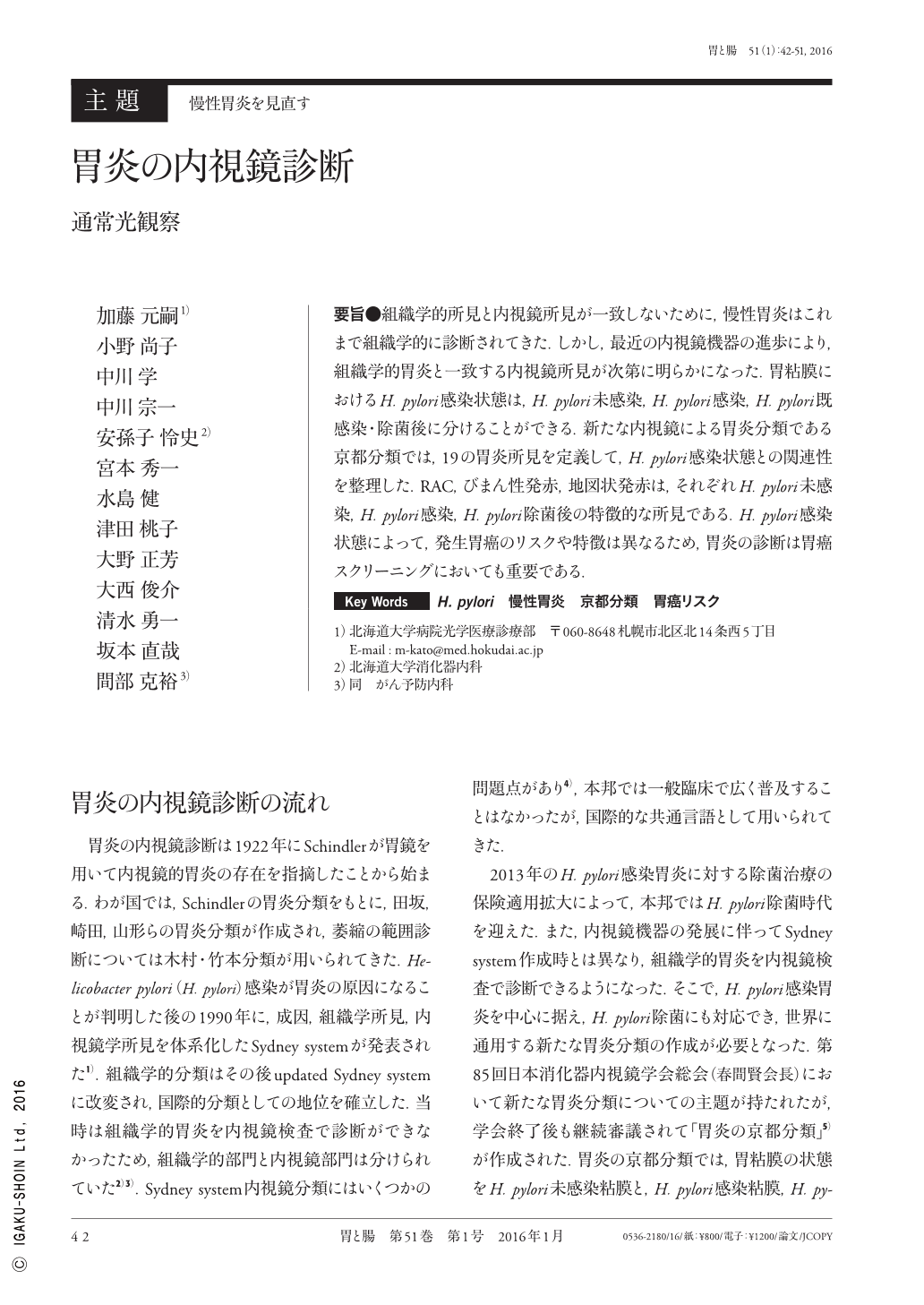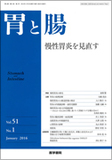Japanese
English
- 有料閲覧
- Abstract 文献概要
- 1ページ目 Look Inside
- 参考文献 Reference
要旨●組織学的所見と内視鏡所見が一致しないために,慢性胃炎はこれまで組織学的に診断されてきた.しかし,最近の内視鏡機器の進歩により,組織学的胃炎と一致する内視鏡所見が次第に明らかになった.胃粘膜におけるH. pylori感染状態は,H. pylori未感染,H. pylori感染,H. pylori既感染・除菌後に分けることができる.新たな内視鏡による胃炎分類である京都分類では,19の胃炎所見を定義して,H. pylori感染状態との関連性を整理した.RAC,びまん性発赤,地図状発赤は,それぞれH. pylori未感染,H. pylori感染,H. pylori除菌後の特徴的な所見である.H. pylori感染状態によって,発生胃癌のリスクや特徴は異なるため,胃炎の診断は胃癌スクリーニングにおいても重要である.
Chronic gastritis has usually been diagnosed by histological examinations because of discrepancy between histological and endoscopic findings. However, recent advances in endoscopy have gradually elucidated endoscopic findings that correspond with histological changes. Based on Helicobacter pylori(H. pylori)infection, the gastric mucosa is divided into the following three states:normal mucosa without a history of H. pylori infection(non-gastritis), currently active H. pylori infection(active gastritis), and past history of H. pylori infection(inactive gastritis). In the Kyoto classification of gastritis, a novel classification system, 19 endoscopic findings related to gastritis are characterized based on H. pylori infection. Regular arrangement of collecting venules, diffuse redness, and map-like redness are highly specific characteristic features of each of the aforementioned states. Since the risk and characteristics of gastric cancer differ among the three states, endoscopic evaluation of gastric mucosa is important for screening of gastric cancer.

Copyright © 2016, Igaku-Shoin Ltd. All rights reserved.


